U.S. Department of Transportation
Federal Highway Administration
1200 New Jersey Avenue, SE
Washington, DC 20590
202-366-4000
Federal Highway Administration Research and Technology
Coordinating, Developing, and Delivering Highway Transportation Innovations
| TECHBRIEF |
| This techbrief is an archived publication and may contain dated technical, contact, and link information |
| Publication Number: FHWA-HRT-16-017 Date: October 2015 |
Publication Number: FHWA-HRT-16-017 Date: October 2015 |
In 1991, the Alaska DOT undertook a massive project to rehabilitate 18 bridges on the Dalton Highway, which runs north–south from Livengood, AK, to Prudhoe Bay, AK. Because of the extremely short construction season in Alaska, in addition to heavy truck usage of the road during the summer months, construction crews used MPCs in conjunction with precast concrete deck panels to facilitate rapid deck replacement of bridges along the Dalton Highway.11 After speaking with Alaska DOT officials, the research team obtained a representative picture of an MPC bridge joint, shown in figure 14. After more than 20 years of service, Alaska DOT officials were satisfied overall with the performance of the material. The officials attributed some cracking in the joint to torsional forces from bridge deck bending at those locations, rather than deterioration because of material deficiencies.

© Alaska Department of Transportation
Figure 14. Magnesium phosphate bridge grout on a bridge on the Dalton Highway, AK,
located at mile point 78.8, after more than 20 years in service
In 2009, the Illinois DOT replaced a significant section of interstate highway pavement in downtown Chicago with CAC concrete after what they described as a “catastrophic blowup of a section of pavement” resulting from nearby tunnel construction. Figures 15 and 16 show the repaired section of pavement. The Illinois DOT chose CAC as the replacement material for the damage to three northbound lanes of I-90/94 between Jackson and Adams Streets because of its capacity for high early strength. The Illinois DOT placed the CAC using mobile volumetric mixers and poured 58.3 m3 (76.25 yd3) of concrete and reopened the road within 5 hours after the start of the construction repairs. The engineer of record noted that the material seems to be holding up well, but that “experienced and well-organized contractors with top notch placement equipment” are required to obtain good results.
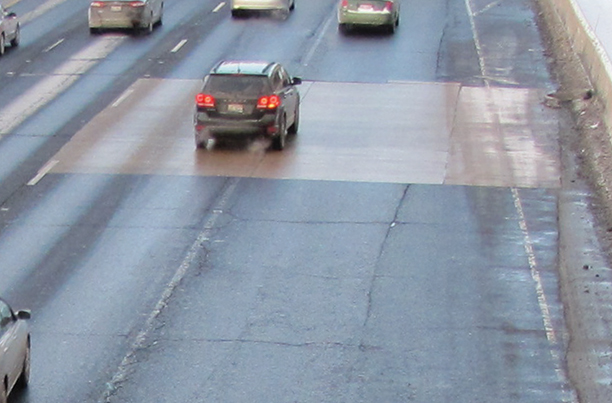
© Falak Shah
Figure 15. Repaired pavement on northbound I-90 in Chicago, IL,
shows good performance of the CAC concrete after 5 years.
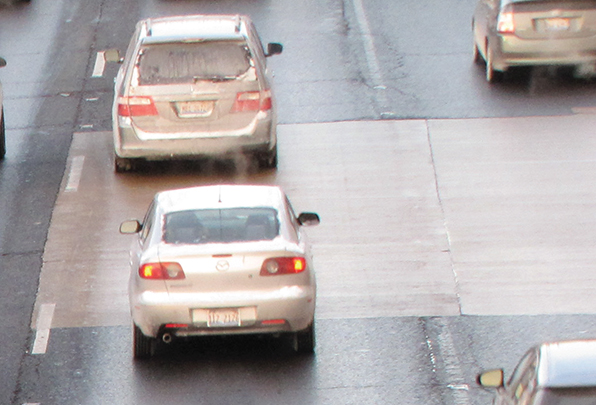
© Falak Shah
Figure 16. Vehicles travel over the repaired pavement on northbound I-90 in Chicago, IL,
which shows good performance of the CAC concrete after 5 years.
The U.S. Army Engineer Research and Development Center has a large outdoor exposure site located at Treat Island just south of Eastport, ME.[58] Researchers at this site placed 15 by 15 by 53 cm (6 by 6 by 21 in) beams (shown in figures 17–19) on a pier in the tidal zone. The researchers exposed the concrete to both freezing and thawing during the winter, as the beams are alternately immersed in sea water and then exposed to the air and freezing weather conditions, as well as to salt water wetting and drying exposure year round.
The research team examined beams, produced from a fly ash-based geopolymer, a slag-based geopolymer, and a CSA cement, for signs of deterioration. These signs included scaling, cracking, and expansion. No signs of expansion or cracking were apparent in any of the ACM samples after 1 year of exposure. Research is ongoing to determine the chloride diffusion coefficient of the beams, which will be useful in assessing the potential resistance to corrosion for reinforced members.
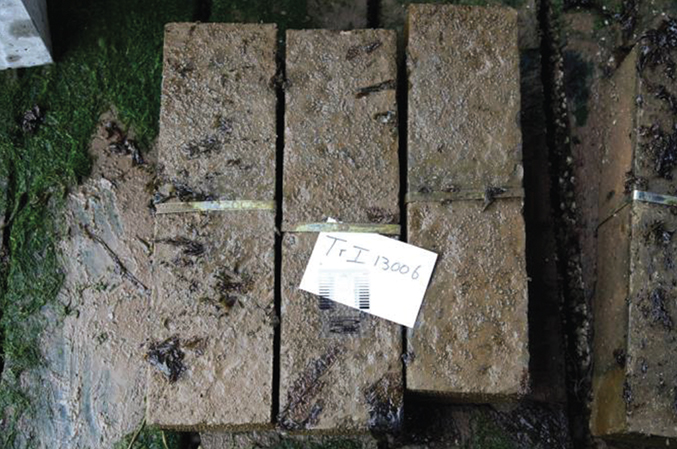
© The Georgia Institute of Technology
Figure 17. Fly ash geopolymer beams after 1 year of exposure at Treat Island.
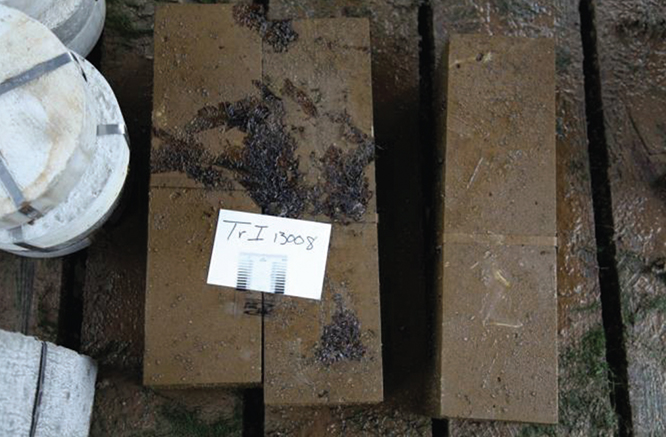
© The Georgia Institute of Technology
Figure 18. CSA cement concrete beams after 1 year of exposure at Treat Island.
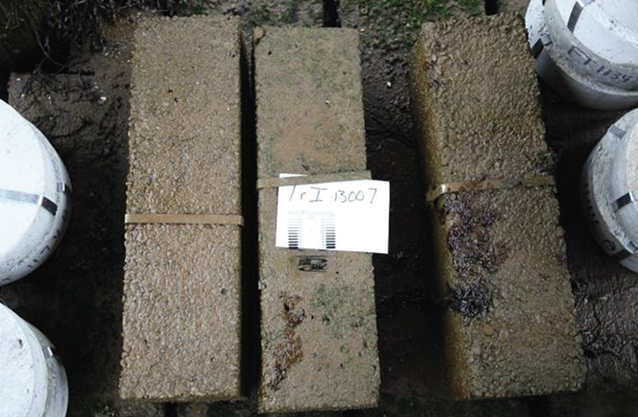
© The Georgia Institute of Technology
Figure 19. Slag geopolymer beams after 1 year of exposure at Treat Island.